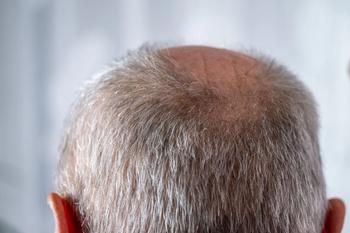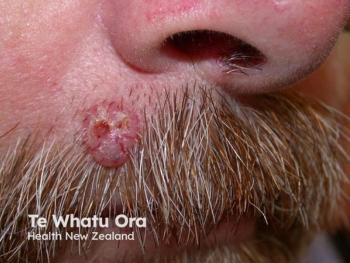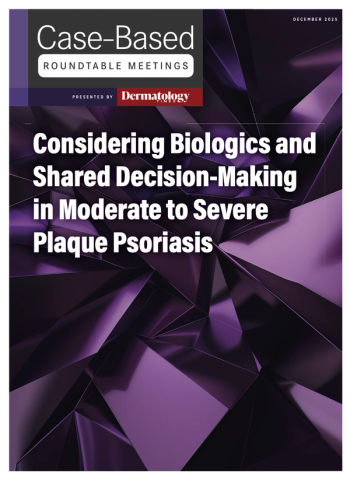
Celebrating World Vitiligo Day 2025 with Dermatology Times
Key Takeaways
- VYNE Therapeutics completed phase 2b enrollment for repibresib gel, a promising treatment for nonsegmental vitiligo, with results expected mid-2025.
- Machine learning techniques, particularly CNN and ANN algorithms, show potential in improving vitiligo diagnosis accuracy compared to traditional methods.
Discover the latest advancements in vitiligo treatment and awareness as Dermatology Times highlights this year's progress during Vitiligo Awareness Month.
June is Vitiligo Awareness Month and World Vitiligo Day is held annually on June 25. According to the
Dermatology Times invites you to join us in advancing understanding, promoting dialogue, and ultimately improving outcomes for individuals living with vitiligo, not just this month but all year round. From emerging therapies and innovative off-label solutions to combination treatment strategies and new research opportunities, below is a collection of the latest vitiligo news and advancements from the first half of 2025.
VYNE Therapeutics announced today the completion of enrollment in a phase 2b trial of repibresib (VYN201) gel for nonsegmental vitiligo. This milestone marks significant progress in developing a potential treatment for this autoimmune depigmenting disorder. Top-line results are anticipated in mid-2025, positioning repibresib as a promising therapeutic candidate for patients with vitiligo, where options remain limited.
Although more evidence is needed, computer-aided machine learning and deep learning techniques may eventually be used to confirm the diagnosis of vitiligo. This first-of-its-kind systemic review determined that convolutional neural network (CNN) and artificial neural network (ANN) algorithms are currently most effective in analyzing and detecting vitiligo, compared to traditional methods.
While first-line treatments for vitiligo primarily include medical therapies, procedural interventions are emerging as valuable options for patients with recalcitrant or refractory vitiligo. In a discussion at the 2025 South Beach Symposium, Nada Elbuluk, MD, MSc, an associate professor of dermatology at the University of Southern California and founding director of their Skin of Color and Pigmentary Disorders Program, provided valuable insights into procedural treatments for vitiligo.
As pediatric vitiligo research progresses, new insights into the condition’s pathogenesis and treatment options are emerging. At the 2025 Masters of Pediatric Dermatology Conference, Dermatology Times spoke with Nanette Silverberg, MD, chief of pediatric dermatology for Mount Sinai Health Systems and clinical professor of dermatology and pediatrics at the Icahn School of Medicine at Mount Sinai, to discuss the evolving landscape of pediatric vitiligo care.
The COVID-19 pandemic significantly affected patients with immune-mediated inflammatory diseases (DIMIDs), including atopic dermatitis (AD), psoriasis, and vitiligo. The fear of morbidity, mortality, and vaccine hesitancy contributed to disruptions in their daily lives. Patients with immunodeficiency diseases, older individuals, males, and those of non-White ethnicity were at an increased risk of severe COVID-19 outcomes. Interestingly, vaccination, a healthy diet, and atopic conditions were considered protective factors against COVID-19. A recent prospective observational, multicenter, multidisciplinary cohort substudy explored the impact of COVID-19 disease and vaccination on DIMIDs, specifically AD, psoriasis, and vitiligo.
The 308-nm excimer laser (EL) is an FDA-approved phototherapy device widely used for vitiligo treatment. It delivers targeted UV radiation to affected areas, minimizing exposure to surrounding healthy skin. However, some patients exhibit resistance to EL treatment alone, prompting the need for combination therapies. Bimatoprost 0.03%, a prostaglandin F2α analog known for inducing melanogenesis, has been studied for its potential efficacy in vitiligo treatment. Researchers behind a recent study aimed to evaluate whether combining EL with bimatoprost 0.03% enhances repigmentation outcomes compared to EL monotherapy.
At the 2025 American Academy of Dermatology (AAD) Annual Meeting, AbbVie presented new findings on upadacitinib’s effects in nonsegmental vitiligo through a biomarker-driven approach. The abstract, "Upadacitinib Reduces Type 1 Inflammation and Increases Melanocyte-Associated Biomarkers to Drive Response in Vitiligo," highlighted insights from a phase 2 clinical trial that explored how upadacitinib impacts disease pathology at a molecular level.
In a poster by AbbVie presented at the 2025 American Academy of Dermatology Annual Meeting in Orlando, Florida, real-world data was used to determine the prevalence of safety concerns and risk factors for patients with vitiligo. Compared to matched controls, patients with rheumatoid arthritis (RA) and patients with atopic dermatitis (AD), patients with vitiligo had a lower incidence of major adverse effects.
A network meta-analysis helped to determine which phototherapy combination method is best for patients with vitiligo. It was found that antioxidants showed superior efficacy with corticosteroids, calcineurin inhibitors, and fractional CO2 laser also showing successful repigmentation rates. This is the first time a network meta-analysis has been used to identify the most effective topical therapy for vitiligo when combined with phototherapy.
A new study by Kang et al. has uncovered a surprising potential benefit of PCSK9 inhibitors—drugs typically prescribed to lower cholesterol. Through Mendelian randomization (MR), researchers found that people with genetic variants mimicking the effects of PCSK9-inhibiting drugs had a lower risk of developing vitiligo. This unexpected link offers fresh insight into vitiligo's underlying biology and opens new doors for treatment.
When combining narrowband ultraviolet B (UVB) phototherapy with tofacitinib for vitiligo, investigators found that the combination therapy was more effective than UVB treatment on its own. After 24 weeks, patients observed improved disease severity, quality of life, and inflammatory response versus the monotherapy.
According to a recent news release from the company, Clinuvel Pharmaceuticals has achieved full enrollment for its pivotal phase III clinical trial (CUV105) evaluating afamelanotide 16mg (Scenesse) as a systemic therapy for vitiligo. With over 200 patients enrolled across 3 continents, this milestone marks a significant advancement in the search for effective, durable treatments for a disease that remains therapeutically underserved. The final patient is expected to complete screening this month, with topline results anticipated in the second half of 2026.
Vitiligo remains a challenging pigmentary disorder for many clinicians, with existing therapies often yielding suboptimal results, especially in patients with stable, treatment-resistant lesions. As traditional options like topical corticosteroids, calcineurin inhibitors, phototherapy, and grafting procedures continue to present limitations, attention has turned toward regenerative techniques. Recent research offers compelling support for the combined use of platelet-rich plasma (PRP) and fractional laser therapy, suggesting a promising treatment modality for enhancing repigmentation outcomes.
In a poster presentation at the recent Society for Investigative Dermatology Annual Meeting held May 7-10 in San Diego, California, researchers shed new light on the complex relationship between vitiligo and depression across diverse racial and ethnic populations. The poster outlined that while vitiligo is generally associated with increased depression risk, this association was markedly stronger among Black and Hispanic patients compared to Asian and White populations.
To catch up on all the vitiligo news and expert interviews from Dermatology Times, click
Reference
1. Vitiligo Facts. Global Vitiligo Foundation. June 1, 2025. Accessed June 25, 2025.
Newsletter
Like what you’re reading? Subscribe to Dermatology Times for weekly updates on therapies, innovations, and real-world practice tips.


















